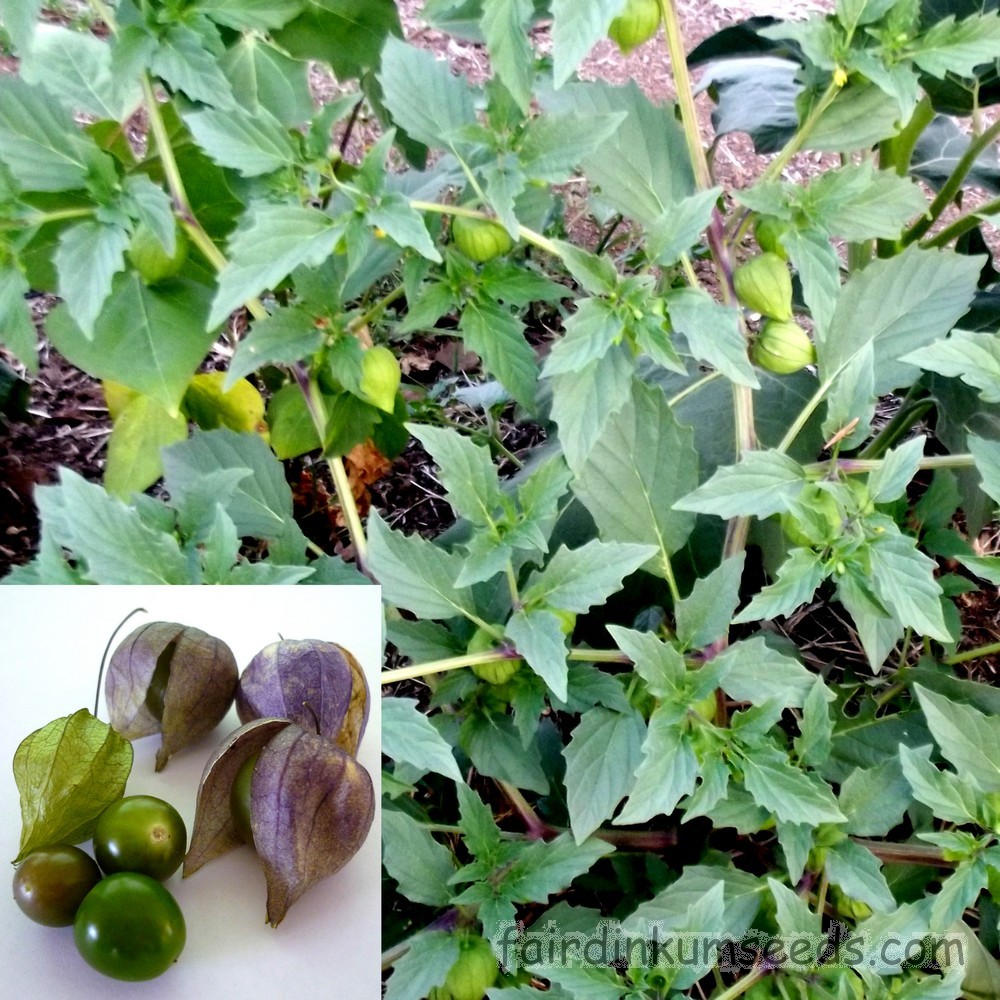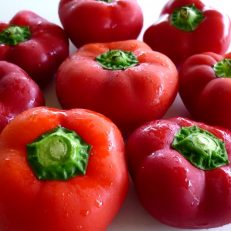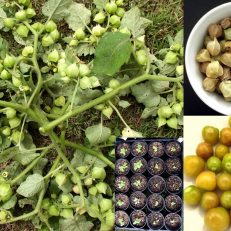Please read text!
Tankari Sunberry Pygmy Groundcherry Physalis Minima Seeds
Big packet of 150+ organically grown seeds!
This fella is suspected to have been brought to Australia long before European settlement by Moluccan traders and some folks consider it native.
Other folks consider it a weed, especially in industrialised broad acre farming like cotton.
I personally just consider it a cool looking bush tucker and I eat it raw or cooked like green tomato.
It is most commonly known overseas as tankari sunberry, or pygmy groundcherry, where as here in Australia most folks call it a gooseberry, or tomatillo.
It grows all through the Australian states of NSW, QLD, WA, NT, along with Asia, Africa, Arabia and the Americas, along with many other places too.
For this reason it is known by a huge range of names that include annual ground cherry, bladder cherry, Chinese lantern, country gooseberry, english gooseberry, gooseberry, green gooseberry, ground cherry, hindi-bandhapriya, little gooseberry, marathi-chirboli, native gooseberry, popti, pygmy groundcherry, ran-popti, sodakku, sunberry, thakkaali, wild cape gooseberry, wild capegooseberry, wild gooseberry, Physalis angulata, Physalis eggersii, Physalis indica, Physalis lagascae, Physalis lagascae var. glabrescens, Physalis micrantha, and Physalis parviflora.
In India and the Himilayas it is considered a medicine as well as a food, and it is used in the treatment of inflammation, enlargement of the spleen, stomach pain, as a general tonic, and large amounts are considered to be diuretic and laxative. I can confirm the last bit…
The crushed leaf juice is mixed with mustard oil and used in cases of ear ache.
The oil works as a solvent breaking up waxy build up and creating heat and temporary swelling that squeezes the plug making it thinner. The ear canal later shrinks and widens allowing the plug to slip free and dislodge while at the same time the leaf juice has antibiotic effects killing infection.
Really quite clever but something I haven’t personally had the need to try, so can’t recommend.
The fruit ripe to yellow or purple depending on the temperature and local conditions. Sometimes they stay green especially in winter, and in that case it is best to wait till they start to wrinkle if you want the best flavour.
Eating too many fully unripe green ones can give you a belly ache, just like apples and stone fruit do, but they don’t have this effect if cooked.
The calyx or husk is just slid off and you can then add them to salads dips and salsas.
They are awesome in curries, soups, pasta sauce and on pizzas they give a really nice cherry tomato type flavour explosion.
When camping they are a real favourite of mine and what I do is just cover the campfire with a bit of sand then wack the whole unpeeled fruit on top.
I then go fishing , foraging, have a nap or whatever, and in a few hours they are all melty, and they taste just like smoky sundried tomatoes. Just awesome!
The calyx or husk bit is like built in aluminium foil and it protects them from the flies, dirt, ash and sand.
Pretty cool hey!
Even cooler the juice contains ~24.5mg per 100ml of juice so snacking on these fellas is certain to keep scurvy at bay if you ever get lost out in the scrub.
Just don’t get them mixed up with things like Shoofly plant.
They are super easy to grow, like I say, some folks consider them a pretty major weed.
BUT, they have a high level of natural dormancy and they germinate over a long period of time.
These are not a domesticated species and for that reason germination may take anywhere from a week to a year.
For me here the average is a couple in the first fortnight, then the rest every time it rains for the next couple months.
I average 70-100% total germination.
In my studies GA3 and Smoke treatment both have a positive but inconstant effect lowering germination times considerably, but also lowering the overall germination % too.
Using them I get only 20-60% sprout, but it only takes a couple weeks normally.
If you are in a hurry and only need a few plants it is well worth a thought, but yeah, I can’t really offer a standardised “always works” recipe, as these fellas are still very feral and I never use those methods these days. I just did a few tests out of curiosity a few years back.
Planted as is untreated, just in the surface of a large pot of sandy soil, the majority will always germinate eventually and with a big packet of seeds like this you can’t really go wrong.
Grown by me and the Mrs organically, no chems, no nasties, no dramas!!!!!!





